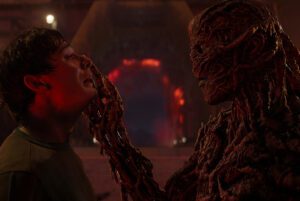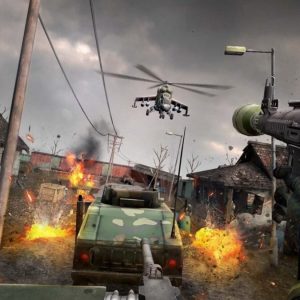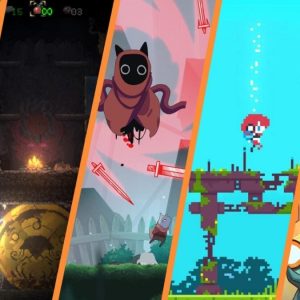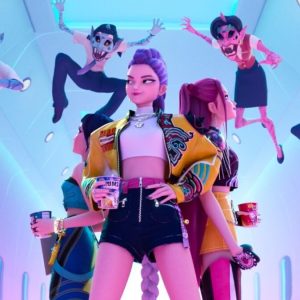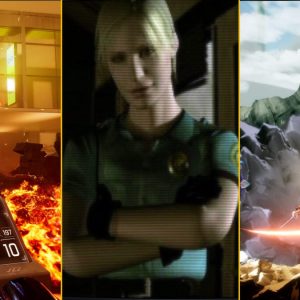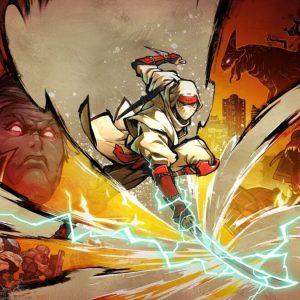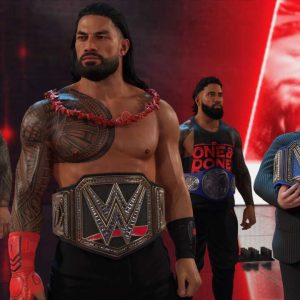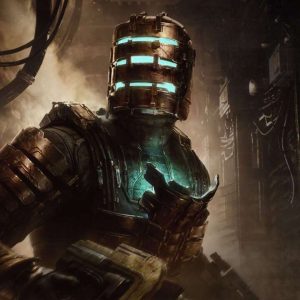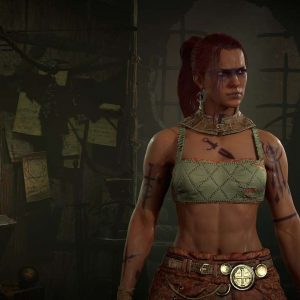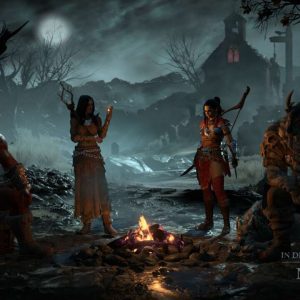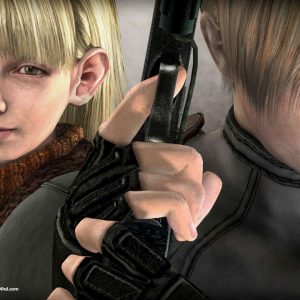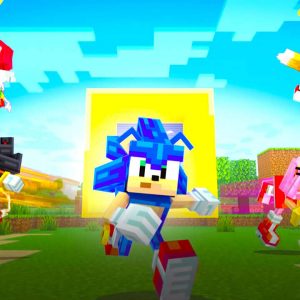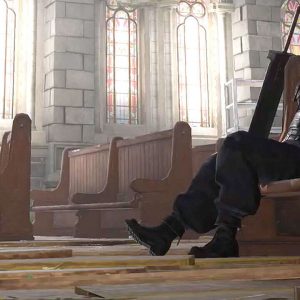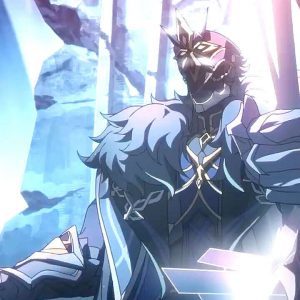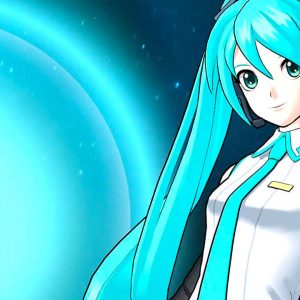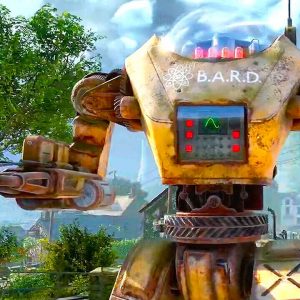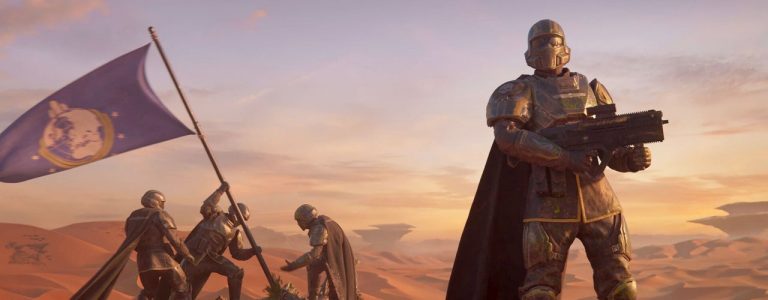
We’ve been covering Mafia: The Old Country in an exclusive way all month long through our IGN First “cover story.” We hope you’ve enjoyed the gameplay and our hands-on preview. Today we have the pleasure of talking to Hangar 13 studio president Nick Baynes and game director Alex Cox about returning the Mafia series to its not-open-world roots, which games The Old Country takes design inspiration from, the plentiful amount of fruit found throughout the upcoming prequel, and more. The following is a transcript of the video interview above that has been lightly edited for clarity.
IGN: Nick, I wanted to start here because I got to talk to you in person last week when I did get to play the game and something that jumped out at me just from our idle conversation was more than once, you mentioned your desire to see players complete this story. And so I’m curious, did your telemetry show you that wasn’t the case with Mafia III?
Hangar 13 Studio President Nick Baynes: Not so much. It’s more, I suppose, anecdotal, the fact that the nature of the type of game that we are making, and if you look at the other Mafia games that were maybe a bit more focused and based much more around a story that had a very clear linear path through it. I think naturally a lot of people completed those and we have a lot of feedback from people who, you see all the reaction videos online of people completing those games when they play it. And I think that’s a really powerful thing. And I think both as a player of games myself and as listening to the fans, people like finishing these stories and the way that we tell the stories, they’re designed to be completed. I think we are really, really proud of the story we’re telling and the whole narrative arc and the development of the characters through the story. So yeah, I guess where we’re coming from, it’s not necessarily a specifically data-driven thing. It’s just we’re telling stories and I think every storyteller wants someone to find out how their story ends.
IGN: You’ve both talked about this decision that you’ve just alluded to again here of pulling back from going more of an open world route as Mafia III did to a more linear, narrative-focused story as with the first two games. Alex, I’d love to hear from you, what drove that decision?
Mafia: The Old Country Game Director Alex Cox: Well, actually it was the response to Mafia Definitive Edition in a lot of ways. We got the response to that game. One of the responses was, “Hey, it is great to get to the end of the game because it’s a little shorter than Mafia III was and see the ending.” So that kind of triggered … We got a response from the remake that that was the kind of Mafia game that a lot of players wanted to play, and it sort of led us down that road is when we were thinking about what was next for the franchise, what was the next kind of game we wanted to build? Obviously we were going through a big engine revision as well for this game too so we wanted to keep it quite focused on what we think Mafia does best, which is telling great stories. So yeah, that’s how all of that kind of came together. It was really the response to … Yeah, it was the response to remake.
IGN: And I suppose from a design standpoint, it certainly changes your mindset a ton. And Nick, from more of a studio level perspective, it maybe shortens the timeline a bit too as opposed to doing more of a full open world thing. So I guess what I’m trying to say is there are probably a lot of benefits that come out of this that are not the original thing you’re going for. You’re making a creative decision, but it seems like there are a lot of happy side effects from it too.
Nick: Well, the biggest side effect of it’s not so much about how long it takes to make it. It’s more about the fact that the things that you are doing, you’re more focused on and you can devote more time to really pushing the quality and making sure that it’s a real polished gem, that everything in the game has had the right amount of attention spent on it to make sure that everything the player encounters feels really, really high quality and that we get to deliver what we want to do. And I think sometimes just generally as developers, you want to focus on everything, but you have to make choices and prioritize, and naturally the more focused you’re getting, the more you can actually polish everything. So that’s very much a key thing about that whole kind of … I use the expression polished gem as absolutely something we’ve referred to throughout development in terms of our focus and how we wanted to focus on this.
Alex: I mean, that was the formula for Mafia I and Mafia II as well, and that was the design principle that we wanted to return to. Both of those games were … I’m talking about the remake of Mafia II, but probably applies to the original game as well back in 2002. But when we are talking about a highly choreographed, high quality action adventure game with a linear story, with this beautiful wild backdrop or however you want to refer to it, that’s the formula that we wanted to revisit. And I think as Nick mentioned there, the amount of time and attention that we’re putting into the cinematic presentation, the action adventure gameplay is much higher than games that really focus on a broader sort of breadth of [gameplay].
IGN: The gaming community responded incredibly positively to the news that you guys were kind of going back to that more narrative linear focus from the first two games, and there was a really positive reception, certainly gamers are happy when they hear that the game is going to cost a little less than they might’ve initially expected. It’s a $50 price point for you guys, and I know the price is ultimately set by your publisher at 2K, but I suppose the one maybe … concern’s probably too strong a word, but just maybe slight defensive worry that I think is natural from a lot of gamers is that, “Oh, well this must mean The Old Country is really short.” Now, I know you guys probably don’t want to sit here and give a number for how many hours this game is because then people just attach good or bad things to that. But I guess would you like to address any of those sort of defensive concerns about “getting your money’s worth?”
Nick: Yeah, yeah, absolutely. So I think the first thing is, I mean, again, obviously we’re not going to give an exact number and partly that it’s obviously different for every single player. But generally speaking, if you think of Mafia I, Mafia II, that’s roughly the same scope and scale as this game, and I think hopefully, I don’t think anyone’s going to be disappointed if they’re going into it with that expectation.
Like you say, really as developers, we don’t really think about the price point. We just focus on making the best game possible. But this game, I feel like it drips AAA quality. When you play the game, I don’t think anyone’s going to play this game and feel that, “Oh, this is a lower budget game.” It looks incredible, it plays really well. There’s all the depth you’d expect in terms of dialogue and the world that has been created around the players and the experience they go through. So I think really no one needs to be concerned about the quality of the game or anything like that, or it being super short. I mean, I saw someone online when we announced the price saying something like, “Oh, I bet it’s like three hours.” It’s not three hours, but going into it expecting a Mafia I, Mafia II style experience, I think everyone’s going to be super happy.
IGN: I really get the sense, and again, you guys have kind of already almost said it here directly, that Mafia I really is kind of the touchstone or the North Star for this project because of that reception that you mentioned to the definitive edition. Can you speak to that of how the reception to the remake of the first game energized the team and drove the creativity for this one?
Alex: Yeah, it’s funny actually because when we came to do the remake, what we did is we actually channeled the design philosophy, the creative approach of Mafia II to the remake, to the original Mafia. So if you know what I mean, we structured it in the same way we presented the chapters in a very similar kind of way to Mafia II. So it was kind of like, what would the original Mafia have looked like if it was remade through the creative lens of Mafia II? And so this project has been in a similar kind of way, taking inspiration from both of those titles. It’s structured, as you mentioned, you mentioned chapters, for example. It’s got a very similar structure to those games. That’s how we divide up our story. Our story is, again, in a similar way to those two titles, spread over several years of time.
There’s significant kind of changes through Enzo’s journey. And in terms of what we wanted players to feel like is that while we’ve created a new Mafia game for a new generation of Mafia games, that it is very familiar on the pad, it’s very familiar in terms of look and feel of the title. It’s got narrative connections, it’s set in the same universe, it’s something that’s going to be immediately familiar to players that want more Mafia, but it’s moving forward in all aspects. It’s visually cutting edge for games in 2025. We’ve moved gameplay forward in various ways from what we did in the past. And so yeah, it’s like a restart for the franchise in many ways, but there’s a lot of familiarity under the hood.
Nick: I think also, just to add to that, and I don’t always know how many people … If people know too much about this, but there’s real connective tissue here at Hangar 13 all the way back to the original Mafia. So we’ve got people here working on The Old Country that worked on Mafia I back in the early 2000s. We’ve got people who worked on Mafia II and all three all the way through including the definitive edition. So when we’re talking about looking back to the first one, some of the team here actually worked on that first one. So we’re not necessarily even looking at it to reference. I think each game is influenced by the last, what worked, what didn’t work, how can we improve it?
The other thing as well is we always starting any game, but obviously in particular a Mafia game, we look at what makes a Mafia game? What is it the players want? What do we think makes a Mafia game? And looking at all that collectively, and building on our experience. But like I was saying, it’s really cool, it’s not just people that joined recently, like myself, I joined seven, eight years ago. So I can look at the old game, say, “This is where it comes from.” Whereas some people here actually look back and they worked on it, they’ve lived it since the late 90s really, when they first started working on it. So that’s the other thing as well. There’s this big through line, not just in terms of some of the narrative connections and some of the game features, but also with the team themselves, which is really awesome, I think.
IGN: Now, Alex, you were talking about, I want to hear from both of you on this. I’m going to do the Sophie’s Choice thing because I’m just curious. You’re not allowed to say Mafia: The Old Country but what’s each of your favorite game in the series so far?
Alex: Well, mine is [Mafia] II, but that’s because that was the first game I worked on, so it’s kind of imprinted itself on me. That was my first game. I worked in QA, I was originally a tester. My first game in development was on Mafia II…It was really hard back then with the limitations we had with obviously the graphical limitations and all that kind of stuff. But the first Mafia, when it first came out and I first saw it, it absolutely blew my mind. And then 20 years later, 18 years later, to get the chance of working on it myself with the definitive edition and seeing it reimagined, I just think that to me, it’s got a really timeless classic story. I love the way it’s structured. Yeah, I think that’s my favorite.
Nick: For me, it’s [Mafia] 1, I think for two reasons. First reason is when it came out, it was just absolutely, I think, groundbreaking in terms of there’s one or two games around that time which were pushing, bringing cinematic storytelling into games.
IGN: So Alex, you hinted at this. You mentioned the engine a little while ago, and I wanted to kind of circle back on that because I’ve been playing Mafia since the beginning as well, and it’s always been a beautiful game. And from what I’ve seen and had the privilege of playing now of Mafia: The Old Country, it’s still very, very much is. You guys have moved from a proprietary engine to Unreal Engine 5, and I’m curious about the impetus behind that choice.
Alex: Well, Unreal, I think as many, many players will be familiar with now, brings an awful lot to new games, gives us cutting-edge visuals in particular. And for the kind of game we were looking to make this time around, we really, really wanted to put a massive emphasis on portraying the beauty of Sicily, the fantastic landscapes, plus the MetaHuman tech and all of the stuff that’s really allowed us to do really, really top quality cinematic presentation. The performances of the actors are really, really fantastic. Amazing quality facial, and that’s key to this Mafia game as it was for all previous Mafia games in their time of release and achieving that kind of let’s say visual cutting edge in particular, environment art and cinematics, was really front of mind when we decided to make the transition.
Nick: And also going back to something we were saying earlier, it’s about focus and focus on quality and focus on the content. When you’re doing your own engine, that’s a lot of time you have to spend and effort in making sure it’s cutting edge and it still looks contemporary and you’ve got a lot of heavy lifting to do on that. And obviously as technology gets more and more … As things get more and more advanced, that takes more and more time. And I think as a studio, we just really wanted to focus on the gameplay, the visuals, the storytelling, the cinematics, and to be able to put as much focus on that as opposed to actually creating the engine that it sits on, it really helps us and I think ultimately allows us to develop and deliver a better quality game.
IGN: Was there a particular landscape or scene that you guys prototyped in Unreal Engine 5 to make sure that it was going to represent the visual quality that you wanted of the series? Because what visually I remember most or what stuck with me after playing your game for three hours is the landscapes. I mean, the characters look great, don’t get me wrong there, no complaints for any of that. But it’s that Sicilian landscape. That’s really what kind of stuck with me. So I’m just curious, was there a little test area that you made to make sure that everybody at the studio was happy with where it was going to go technologically?
Alex: Yeah, it’s funny actually because the first thing that we did right at the beginning of the project, and it was almost like the whole team moved to Unreal and we decided to come together around one exercise that we could all align behind. And that was creating the market square environment from Mafia II. Mafia II starts in Sicily, and actually our game is set in the same … You see this town called San Celeste right at the beginning of Mafia II. We chose that for a whole wide variety of reasons. A, we already know what it looks like. B, we can see what it looks like when we’ve massively upgraded it like 15 years later. And also we know that at the pre-existing location from the franchise, we’re going to channel the creative vision, we’re going to channel the narrative universe. We’re going to get all of the stuff in there by grounding ourself in that first place. So that’s where we started, right in the center of San Celeste.
IGN: Digging into the gameplay a little bit here, I’ve got a handful more questions for you guys. Stealth, we were talking before we recorded, I love stealth. And when I was playing Mafia: The Old Country, I took full advantage of the stealth opportunities that were presented to me. It seems like it is a fully supported combat play style choice, maybe not necessarily in every scenario. Sometimes you’re going to have a one-on-one knife fight with somebody that’s terrible and you’re not going to stealth your way out of it. But what were the goals with implementing stealth into Mafia: The Old Country?
Alex: Mafia’s got these … We call it a roller coaster experience. Sometimes you play a choreographed shootout, sometimes it’s a car chase, sometimes it’s a stealth section, sometimes you get to choose, and stealth has been kind of a big part of the play your way kind of style of Mafia since Mafia II. It was in Mafia II a little bit. Mafia III became pretty much play your way all the way through. For Mafia: The Old Country, it was always going to be part of the formula.
The thing that’s I think most pertinent to this game is because we wanted to make combat generally more feel more dangerous, we wanted to bring in a more grounded kind of feeling to any kind of encounter with enemies, we wanted to make sure that stealth really captured that vibe of surviving in a dangerous environment. So there’s a heightened value to sneaking around and taking out a guard. And also that vibe of, well, Enzo is trying to survive in 1900 Sicily. It’s kind of a resource port environment, you’re having to loot and scrabble around for resources in combat, for example. Again, favoring a more deliberate gameplay style if you’re going to stealth around and kind of take out a few enemies.
IGN: I was really surprised just in a fun way, that Enzo’s knife seems to be very important in the sort of combat loop of the game. You guys basically have a kind of whole knife RPG system down to the point where in my head I couldn’t help thinking about it of you almost have to reload your knife like a gun when the blade dulls. You got to take a minute to sharpen it. So can you guys talk about the design choices of the knife and how that’s really seems to be kind of doubled down on?
Nick: Well, I think the first thing is that Enzo, I think we already described elsewhere that Enzo comes from the mines. He’s certainly had a very impoverished childhood. He’s used to scrabbling around and making use of anything that comes to hand and being resourceful. So when we added the knife, we didn’t just want it to be, oh, it’s a melee item you can use and it’s maybe a different takedown. It actually needed to feel like a real almost extension of Enzo, it’s something that’s really … He’s much more familiar with knives and sharp objects than he is with guns, for example.
So then it was like, well, okay, well if you’ve got a knife, what else would you do with it? And you’d pick locks and you’d throw it, and you also would do takedowns. And then the question is, well, it can’t be to overpowered. Well, they’re going to get blunted, so you need to sharpen them. And I think really that whole thing was not just having a weapon for the sake of it. Say, oh, we’ve added a knife as a melee item. It was much more this is key to who Enzo is and how he goes through the world and how he’s grown up.
Alex: Yeah, I mean it came from the history of Sicilian criminals as well. That idea of a Sicilian criminal armed with a knife is sort of like part of the history of the Sicilian Mafia knife fighting, that is a kind of martial art in Sicily. And so there’s a lot of grounding in the historical context of the story and the vision of … Yeah, I mean particularly when it escalates into knife duals, Enzo versus bad guy on a kind of a sun-drenched hillside, like fighting to the death is a core angle that really sells the unique aspect of this game. What’s the vision of title? It’s grounded in that 1900 Sicily setting while still broadly speaking, playing like a Mafia title as players would expect.
IGN: On a sort of similar note about authenticity, there is a good bit of Italian spoken this game, even when playing in English. I imagine the dialogue in this at least as much, possibly more than any other game, is probably gone over with a very, very fine tooth comb? Because I imagine you’ve not only got to make sure that any Italian language that’s used is done in kind of an authentic way, but also, and you guys have done this before, so it’s not like your first rodeo here. But I imagine you’ve got to make sure the voice cast isn’t doing some sort of stereotype caricature of a typical mafia crime family too. So can you kind of speak to that sort of authenticity piece of it?
Alex: When we look at the previous Mafia Games, Mafia I, II, and III, the performances, the kind of authenticity, the particular locale, Chicago, New York, New Orleans comes across from the performances, the actors and all of that stuff.
Now, we knew in this case we were going to be making a game that was primarily English language first, English language is the native language, but had to be accented. So that was always going to be a challenge to avoid the problem you mentioned there where it doesn’t sound strange, somebody putting on an odd accent, derivative or any kind of weirdness there. And so we were quite careful in the casting process. Several of the main cast are native Italian, so that helps, including Ricardo, who plays Enzo. He’s a native Italian. And again, and everybody else could do a very plausible accent. Everybody spent some time with a voice coach as well to make sure that they were as close as possible doing an authentic Sicilian accented English. And then we’ve been consulting with a partner team, a developer in Sicily as well, who’s been giving us a lot of advice about cultural matters, including performance and such.
IGN: Just about done here. But I’m curious why a prequel this time versus either continuing forward in time after three, or maybe even going back to somewhere between two and three. So can you guys, I’m just curious the decision to put the timeline where it was in this one?
Nick: There’s a lot of reasons. I mean, one of them was we wanted to start up a whole new story arc for the Mafia series. And so what better ways than to go back to the very start of Mafia? What’s really nice about this game, I think is for new players who are jumping on for the first time, they don’t need to have played any other Mafia games. But for players who have played the other games, there are links and certain Easter eggs and character hints and that kind of stuff in there, which links it all together. And it just felt like a good place to start. The origin of organized crime, the origin of the franchise itself, whilst also setting things up for the future.
And also, I think one of the things we always look at with Mafia is we’re letting players play the mob movie. And we’ve done the big American crime cities and it felt like a really unique, very, very appropriate place to go to. We thought it’d be a beautiful environment to make a game in, which as you said, it has been. And it’s just a unique story, I guess. So I think that was just some of the things. It gives gameplay opportunities that if we’d gone to another city, it might have not given us the opportunities to what we’ve done in this game, and obviously in the future, who knows where we’ll go next. But this felt like a really appropriate place to kind of kick things off in this next story arc.
IGN: Love it. All right. I saved my most important question for last here. Now I only played three chapters, about three hours, but I think in that time I saw more just gorgeously rendered and beautifully lit fruit in your game than maybe I’ve seen in any entire single game ever. So are you guys confident in saying that you have the most fruit and best looking fruit in the history of video games? This is a key question here.
Nick: [laughs] Yes. I’m happy to go on the record and state that is correct.
Alex: [laughs] 100%.


